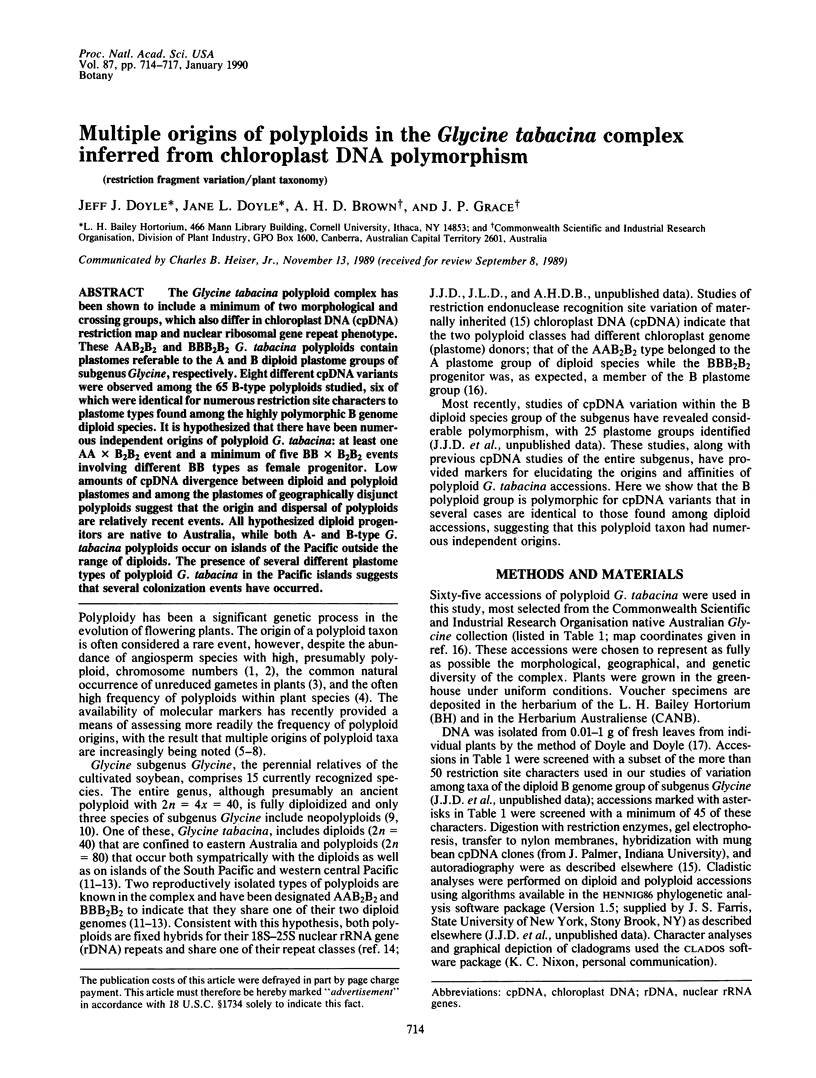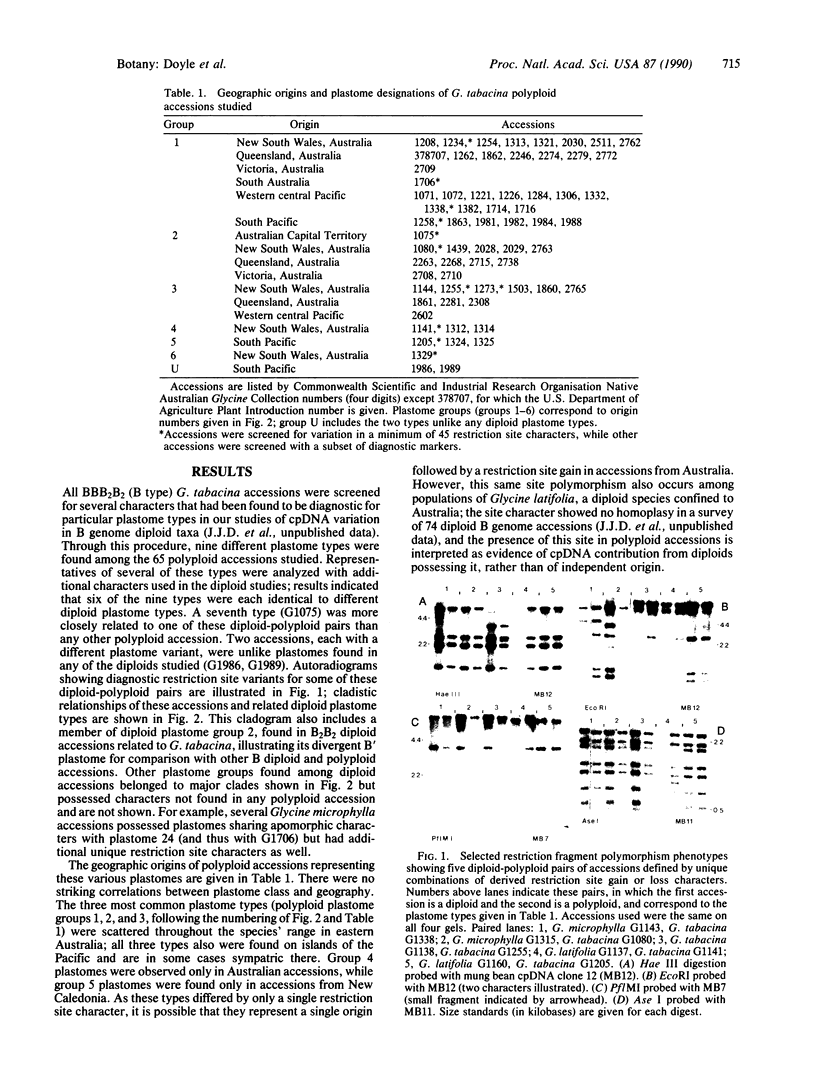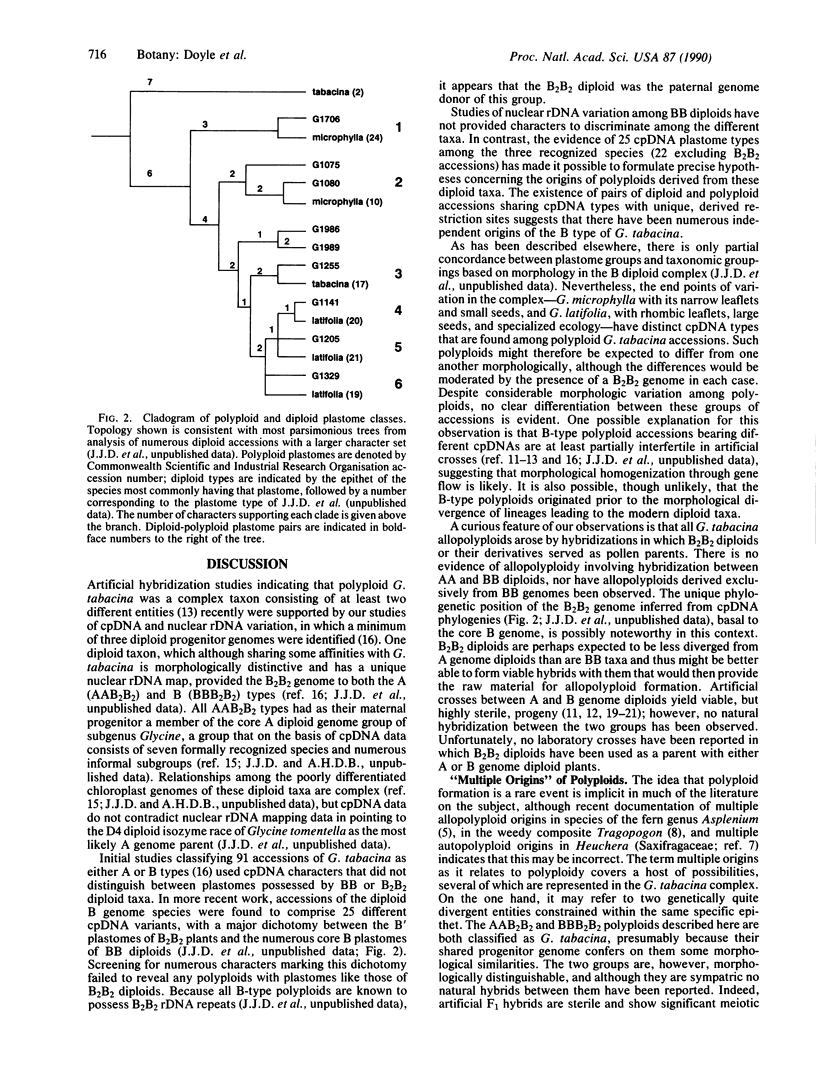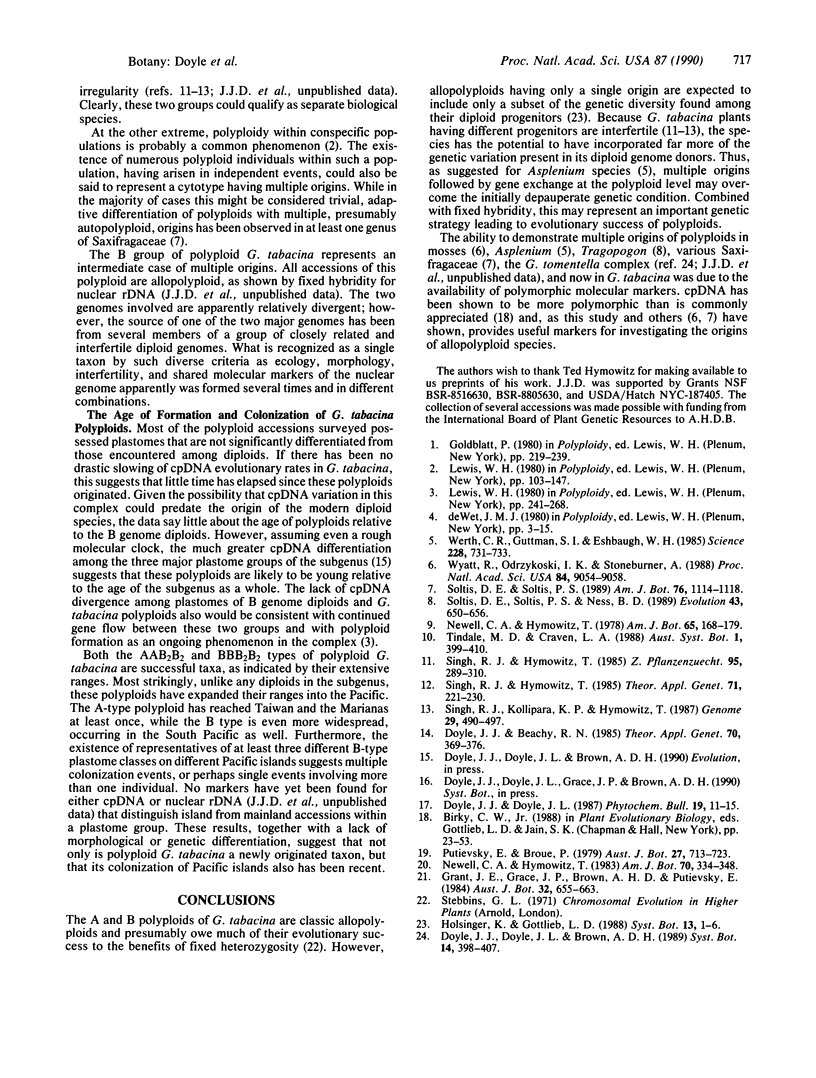Abstract
The Glycine tabacina polyploid complex has been shown to include a minimum of two morphological and crossing groups, which also differ in chloroplast DNA (cpDNA) restriction map and nuclear ribosomal gene repeat phenotype. These AAB2B2 and BBB2B2 G. tabacina polyploids contain plastomes referable to the A and B diploid plastome groups of subgenus Glycine, respectively. Eight different cpDNA variants were observed among the 65 B-type polyploids studied, six of which were identical for numerous restriction site characters to plastome types found among the highly polymorphic B genome diploid species. It is hypothesized that there have been numerous independent origins of polyploid G. tabacina: at least one AA x B2B2 event and a minimum of five BB x B2B2 events involving different BB types as female progenitor. Low amounts of cpDNA divergence between diploid and polyploid plastomes and among the plastomes of geographically disjunct polyploids suggest that the origin and dispersal of polyploids are relatively recent events. All hypothesized diploid progenitors are native to Australia, while both A- and B-type G. tabacina polyploids occur on islands of the Pacific outside the range of diploids. The presence of several different plastome types of polyploid G. tabacina in the Pacific islands suggests that several colonization events have occurred.
Full text
PDF



Images in this article
Selected References
These references are in PubMed. This may not be the complete list of references from this article.
- Werth C. R., Guttman S. I., Eshbaugh W. H. Recurring origins of allopolyploid species in asplenium. Science. 1985 May 10;228(4700):731–733. doi: 10.1126/science.228.4700.731. [DOI] [PubMed] [Google Scholar]






